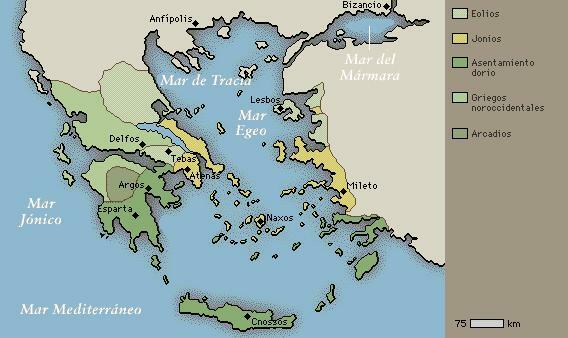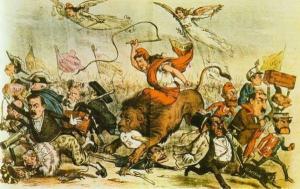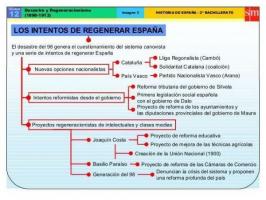Ancient Greece and its cities

The gestation process of the city-states of Greece was quite long in time, spanning from the second millennium BC. C. until the 2nd century AD. C. the latter moment in which Greece became part of the Roman Empire. Next in this lesson from a TEACHER we will delve into the study of the Ancient Greece and its cities where we will see how the development was carried out with some of its most important characteristics. Read on and you will discover the evolution of the cities of Greece and how, little by little, they went from being simple palaces to open spaces to a large population that traded among them.
Map: getting to know the Greco-Roman culture
In this historical period we are going to find a series of palaces-states such as those of Knossos or Festus, which, even today, few aspects of the way of life of these ancient Greeks because only remains of ruins remain because these settlements were brutally destroyed by future invasions. The little that is known about these cities or palaces gives us the idea of the autarky in which they lived, that is,
they produced to subsist without the need to have a strong commercial network between them.The palaces themselves were a true labyrinth of dwellings (this generated legends such as the Labyrinth of the Minotaur) that they kept in their inside the so-called Throne Room, a place where the basileus received and dispatched messengers from other nations or had meetings with his cut. Little else is known about what was done in these buildings.
While, the population that supported these was in some villages at a considerable distance, these villages had to cultivate the fields, in addition to raising cattle and doing handicrafts for the palace. Once the products were sent to this, they were redistributed back to the village depending on what was given by each one. Although it may seem that it was a fairly egalitarian way of life, there were people who did not work to collect their sustenance, so this would end in a series of civil wars between the population of the villages and the same palaces.

Image: Classical Greco-Latin Studies Classroom
Between the IX-VIII centuries we are going to find a series of communities throughout the Aegean, which we are going to be able to relate to city-states of Ancient Greece. During this period of time and studying the archaeological remains that exist, we will find as of the small population centers that had appeared between the disappearance of the Cretan and Minoan palaces in the 9th century, they will gradually unite politically, becoming the village the settlement of the new cities that were beginning to emerge.
Thus we will begin to see that within these temples began to be seen and again the figure of the palace, appearing by both the figure of the king, these kings were the leaders of the war and the representatives of the people in their politics Exterior. The difference from the bygone era is that we will find a more stable trade, in which they needed the help of the other polis to improve, that is, although they were autonomous, since the production of food was enough for them not to die of hunger, they needed other products that were no longer within their reach (in this case we will find as some cities specialized in ceramics, others in jewelry and others in exporters of construction elements such as the marble). Some examples of cops were Sparta and Athens.
Between the VII-VI centuries we will find a great crisis that almost led to the disintegration of Greek citiesThis was due to the struggle between the monarchs and the aristocrats (who wanted more power), and what led the aristocrats themselves to a series of murders to end them. It will be the moment by which we will find the rise of the Senates, in which the rulers were democratically elected, where in some cases they could become dictators / tyrants admitted by the people, as they did good things for the peasants to stay in power, detracting from the power of the nobility.
The second century a. C. It will be when the Greek polis cease to be autonomous, as it will be Alexander the Great who creates an Empire unifying this entire conglomeration of cities that only came together from time to time to face a common enemy. After his death, the Empire was divided, but the polis never again had the power of decision that they had before.
In this other lesson from a TEACHER we will discover a short biography of Alexander the Greatso that you get to know this emperor better.
These appeared about the eighth centuries BC. C. and they are the best definition of Greek civilization, since it was the political and cultural center of the Greek population. Each of them was independent of the other and called foreigners to anyone who did not belong to it. Despite their autonomy, they were aware of belonging to the same civilization, this was given by language and religion (which were common).
The rivalries between these was what would originate the Peloponnesian War, which allowed Philip II and his son Alexander the Great to unify the territory, becoming considered an Empire. Regarding the division of the Greek polis, we could say that it is characterized by having:
- Acropolis: it was an elevated fortress, which was used in case of siege to protect itself from the enemy. It would also be the site where we will find the economic, political and religious buildings.
- Agora: as the nerve center, where we will find commercial, cultural or public activity.
- Wall: delimited the end of the city, so much so that all those who lived outside of these were not considered citizens



